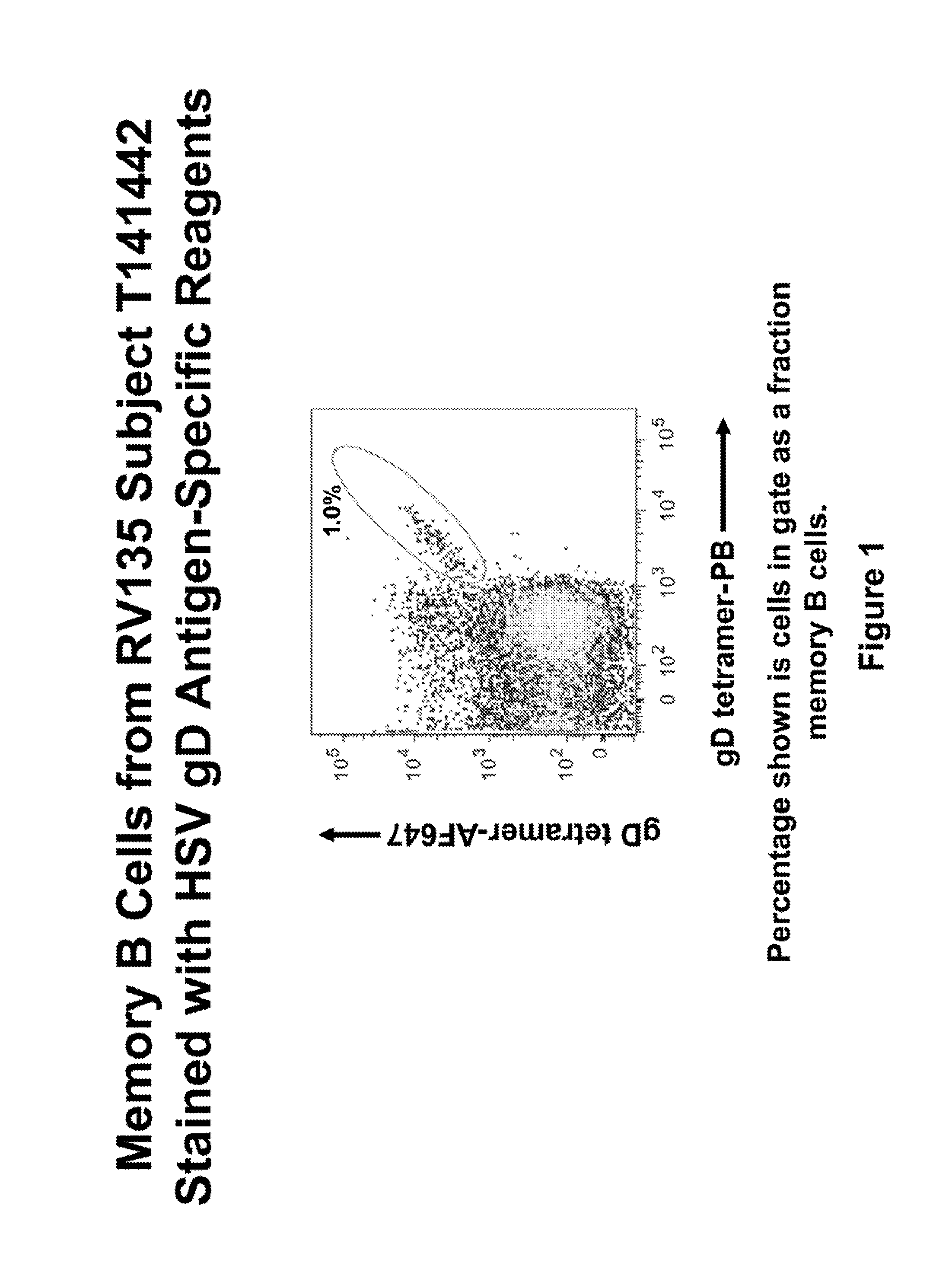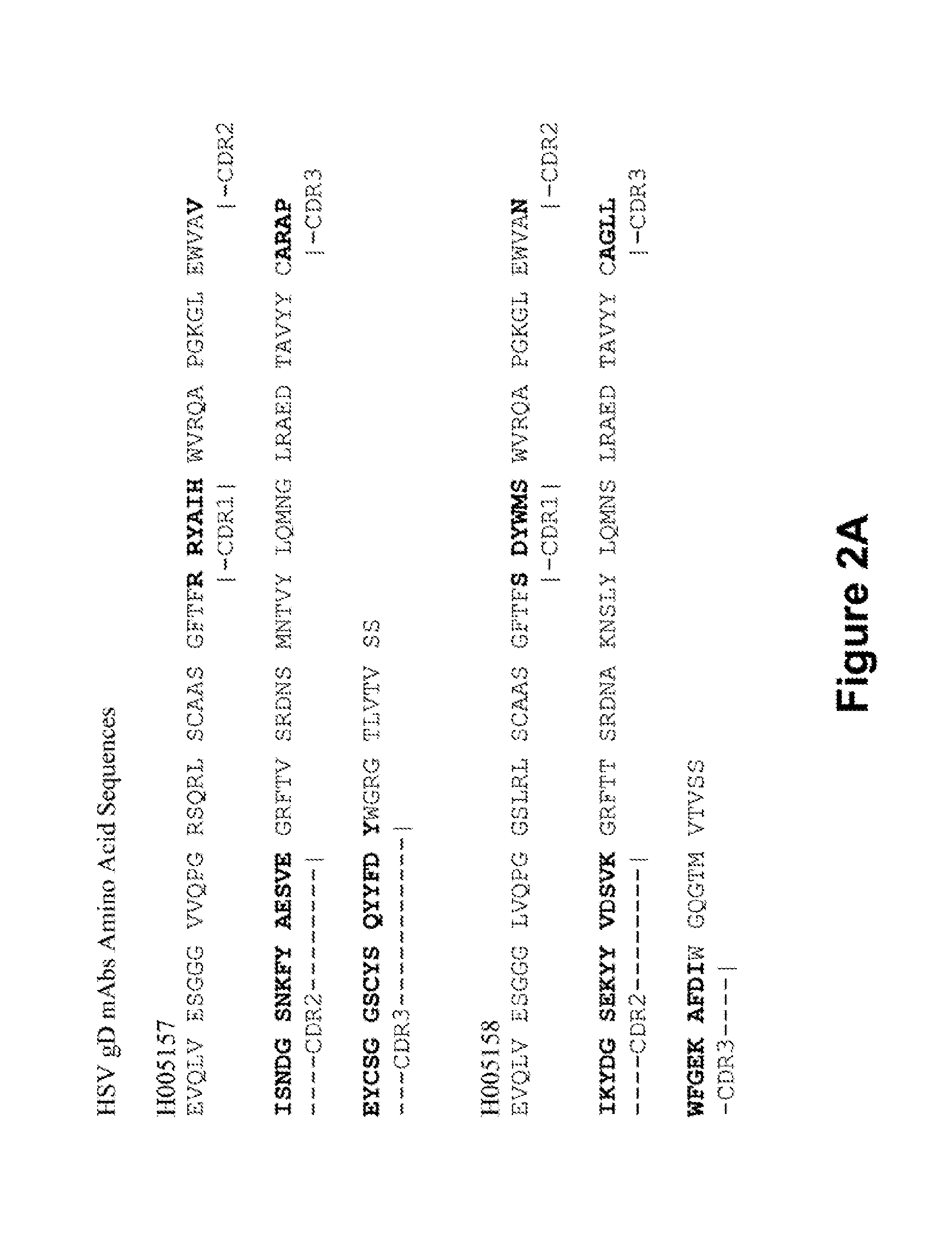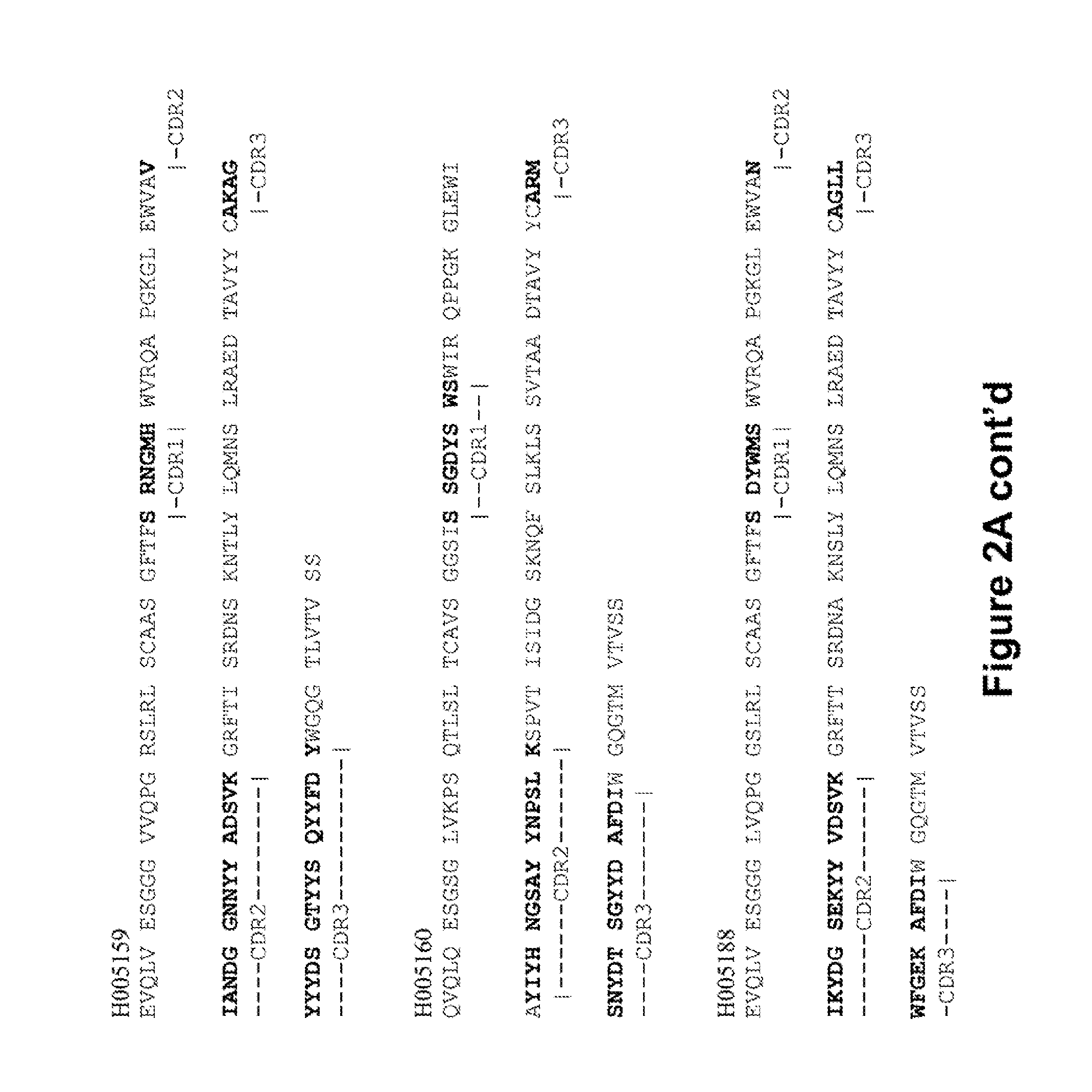Herpes simplex virus
a technology of herpes simplex and virus, applied in the field of herpes simplex virus, can solve the problems of increasing morbidity and mortality, affecting the immune system of hosts, and affecting the ability of immune system to function normally,
- Summary
- Abstract
- Description
- Claims
- Application Information
AI Technical Summary
Benefits of technology
Problems solved by technology
Method used
Image
Examples
example 1
Isolation of Antibodies from a Subject Immunized in RV135 Study (AVLAC-prime gp120-boost)
[0028]Flow cytometry data showing the population sorted to obtain HSV gD mAbs is provided in FIG. 1. Cells shown in the gate are memory B cells (live CD3 / 14 / 16 / 235a− CD19+ surface IgD−) stained with B cell tetramer specific for the HSV gD sequence. Of memory B cells, 1.0% were labeled using this technique (dual color antigen-specific staining) and were sorted as individual cells into 96-well plates. Using recombinant DNA techniques, human mAbs were created from these cells (Liao et al, J. Virol. Methods 158(1-2):171-179 (2009) and Smith et al, Nature Protocols 4(3)(January 1):372-384 (2009)). Of nine heavy chains isolated from this sort, seven were specific for the gD sequence when assayed (see the heavy and light chain gene sequences set forth in FIG. 2). mAbs 5157, 5159, 5160 and 5190 are IgG1 antibodies and mAbs 5158, 5188 and 5192 are IgA2 antibodies.
example 2
Mapping of Isolated mAbs to Alanine-Substituted gD Peptides
[0031]ELISA data of mapping of the residues critical for mAb binding for mAb 5157 (CH41) are shown in FIG. 3A. Assay results are nearly equivalent for all amino acid substitutions except for the phenylalanine (F) at position 17 and the leucine (L) at position 22 that show dramatic reductions in binding. In addition, a slight reduction is seen for substitution at position 21 (aspartic acid, D).
[0032]ELISA data of mapping of the residues critical for mAb binding for mAb 5190 (CH43) are shown in FIG. 3B. Similar to the results for CH41, the assay results are nearly equivalent for all amino acid substitutions except for the phenylalanine (F) at position 17 and the leucine (L) at position 22 that show dramatic reductions in binding. A smaller reduction is seen for substitution at position 21 (aspartic acid, D).
[0033]ELISA data of mapping of the residues critical for mAb binding for mAb 5188 (CH42) are shown in FIG. 3C. Assay resu...
example 3
Location of Binding Footprint on Published gD Crystal Structures
[0034]The crystal structure of the HSV gD protein complexed to one of its human receptors, HveA, is shown in FIG. 4A. The HSV gD protein is the globular protein shown in gray; HveA is shown in magenta and is to the right and slightly below HSV gD. Two views are shown, one slightly rotated compared to the other. The crystal structure was published by Carfi et al, (Molec. Cell 8 (1):169-179 (2001)).
[0035]Shown in FIG. 4B are the same views of the crystal structure shown in FIG. 4A with the two amino acids shown to be critical for binding (see FIGS. 3A and 3B) highlighted in yellow and pointed at by arrows. The residues critical for binding of mAbs 5157 (CH41) and 5190 (CH43) are near the contact points for gD-HveA interaction. The mAbs 5157 (CH41) and 5190 (CH43) would be expected to prevent binding of gD to its receptor.
[0036]Shown in FIG. 4C are the same views of the crystal structure shown in FIG. 4A with the amino aci...
PUM
| Property | Measurement | Unit |
|---|---|---|
| resistance | aaaaa | aaaaa |
| crystal structure | aaaaa | aaaaa |
| dual color antigen- | aaaaa | aaaaa |
Abstract
Description
Claims
Application Information
 Login to View More
Login to View More - R&D
- Intellectual Property
- Life Sciences
- Materials
- Tech Scout
- Unparalleled Data Quality
- Higher Quality Content
- 60% Fewer Hallucinations
Browse by: Latest US Patents, China's latest patents, Technical Efficacy Thesaurus, Application Domain, Technology Topic, Popular Technical Reports.
© 2025 PatSnap. All rights reserved.Legal|Privacy policy|Modern Slavery Act Transparency Statement|Sitemap|About US| Contact US: help@patsnap.com



